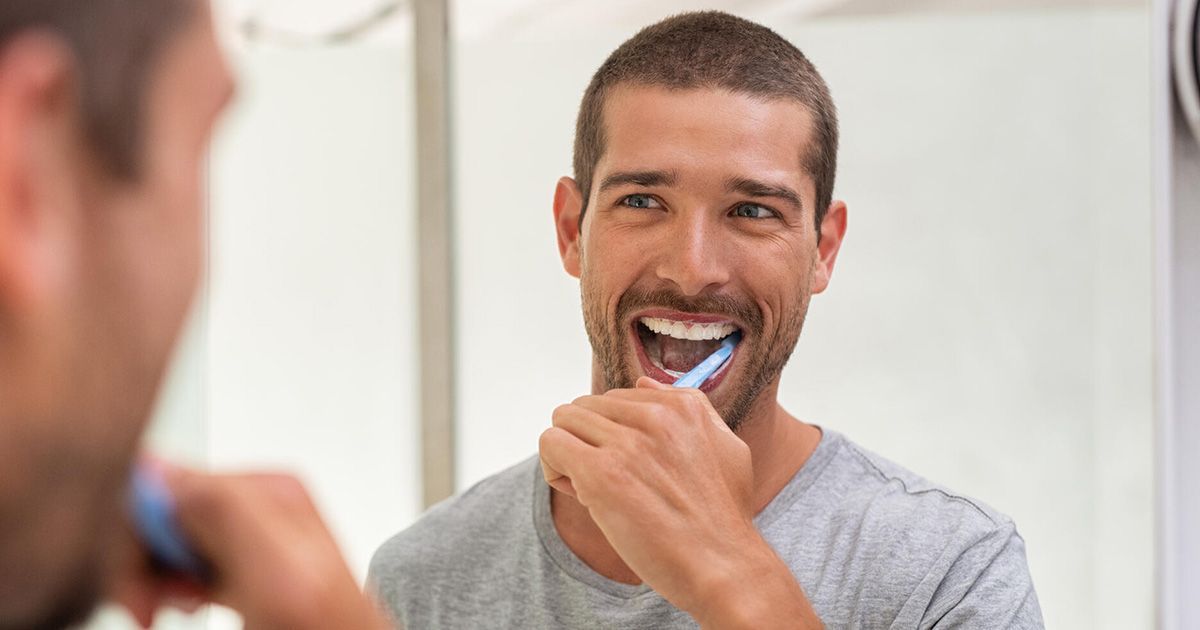Dealing with a Cavity Between Molars: Expert Advice and Solutions
Learn the causes and treatments for a cavity between molars to keep your teeth healthy. Get expert care at Putnam Bright Smile today.
Finding yourself grappling with a cavity? If so, don't panic. Dental health issues, particularly when dealing with a cavity between molars, can be a real pain! Thankfully, you're in the right place for expert advice and effective solutions.
In this article, we'll discuss the common causes of these pesky cavities and provide dental health tips to keep your smile bright. Whether you're looking for preventive measures or the best dental cavity treatment available, our helpful guide has got you covered. Let's get started on your journey to optimal dental health!
The Causes of Cavities Between Molars
The primary cause of cavities between molars is the accumulation of plaque. When you eat sugary foods, the bacteria in plaque create acids that corrode the enamel. Over time, these acids can break down the enamel and lead to the formation of a cavity. Several factors contribute to the development of a cavity between molars:
Poor Oral Hygiene: Improper brushing and flossing can leave food particles and plaque in the spaces between your molars, increasing the risk of cavities.
Diet: A diet high in sugar and carbohydrates feeds the bacteria in your mouth, leading to more acid production and a higher likelihood of cavities.
Lack of Fluoride: Fluoride helps to strengthen tooth enamel and make it more resistant to decay. A lack of fluoride, whether in your toothpaste or drinking water, can increase your risk of cavities.
Dry Mouth: Saliva plays a huge role in neutralizing acids and washing away food particles. A dry mouth, which can be caused by certain medications or dehydration, can increase your risk of cavities.
Gum Recession:
As gums recede, the roots of your teeth become exposed. These roots are more vulnerable to decay because they are not covered by protective enamel.
Recognizing the Signs of an Interdental Cavity
Cavities between molars are tricky to identify on your own, especially in the early stages. However, there are several signs that may indicate the presence of an interdental cavity:
- Tooth Sensitivity
- Pain
- Visible Discoloration
- Bad Breath
- Swollen or Bleeding Gums
The Importance of Tooth Decay Prevention
Preventing cavities between molars requires a proactive approach to dental health. By implementing a few key strategies, you can significantly reduce your risk of developing cavities:
Maintain a Regular Oral Hygiene Routine
Brush your teeth at least twice a day with fluoride toothpaste. Always brush for at least two minutes, paying special attention to the molars.
Floss daily to remove food particles and plaque from between your teeth, particularly between the molars where a toothbrush cannot reach. Consider using an interdental brush or water flosser for added cleaning power.
Adopt a Tooth-Friendly Diet
Incorporate foods rich in calcium, such as dairy products, leafy greens, and almonds, to help strengthen your teeth. Drink lots of water throughout the day to help rinse away food particles and keep your mouth hydrated.
Use Fluoride Products
Fluoride toothpaste and mouthwash can help strengthen your enamel and protect against cavities. If your drinking water is not fluoridated, talk to your dentist about fluoride supplements or treatments.
Gum Disease Prevention Tips
Preventing gum disease is vital for maintaining overall oral health. Below are some tips to help protect your gums:
- Practice Good Oral Hygiene
- Use Antibacterial Mouthwash
- Quit Smoking
- Eat a Balanced Diet
Dental Cavity Treatment Options
If you suspect or have been diagnosed with a cavity between your molars, prompt treatment is essential to prevent the decay from worsening. Several treatment options are available, depending on the severity of the cavity:
Dental Fillings
For more advanced cavities, your dentist will likely recommend a filling. During this procedure, the decayed portion of the tooth is removed, and the cavity is filled with a material like composite resin or porcelain. Fillings restore the tooth's shape and function while preventing further decay.
Root Canal Therapy
If the decay has reached the pulp, a root canal may be necessary. This procedure includes getting rid of the infected pulp, cleaning and disinfecting the root canals, and filling them with a special material. A crown is usually placed over the tooth to protect it.
Crowns
In cases where a significant portion of the tooth is damaged, a crown may be needed to restore its strength and appearance. Crowns are custom-made caps that cover the entire tooth, providing protection and stability.
Tooth Extraction
If the cavity is too extensive and the tooth cannot be saved, extraction may be the only option. Your dentist will discuss tooth replacement options, such as implants or bridges, to restore your smile.
Dental Health Tips for a Lifetime of Healthy Teeth
Maintaining a healthy smile requires ongoing effort and commitment. Here are a few dental health tips to help you keep your teeth and gums in top condition:
Brush and Floss Daily
Brushing and flossing are the foundation of good oral hygiene. As mentioned above, make it a habit to brush twice a day and floss once a day to remove plaque and prevent cavities.
Limit Sugary and Acidic Foods
Sugary and acidic foods can erode your enamel and lead to cavities. Enjoy these foods in moderation and rinse your mouth with water afterward.
Replace Your Toothbrush
Replace your toothbrush every three to four months, or sooner if the bristles are frayed. A worn toothbrush is less effective at cleaning your teeth.
Schedule Regular Dental Visits
Regular dental check-ups are essential for catching problems early and maintaining a healthy smile. Aim to
visit your dentist every six months for a cleaning and exam.
Got a Cavity Between Molars? We Can Help
When it comes to your dental health, choosing the right dentist is essential. So, if you're dealing with a cavity between molars, our expert team is here to help. We offer a range of services, tailored to meet your individual needs.
At Putnam Bright Smile Dentistry, we are committed to providing the highest quality dental care in a comfortable environment. From the minute you walk into our office, our staff will make your visit as comfortable as possible.
Give us a call at 845-999-1181, or book an appointment online.
Dr. Rohit Z Patel
D.D.S
After graduating at the top of his class, Dr. Patel continued his postgraduate studies in endodontics at Columbia University College of Dental Medicine in New York. He was appointed to assistant clinical professor of dentistry at Columbia University and later moved on to teach at the Montefiore Medical Center’s Department of Dentistry. Westchester Magazine recognized Dr. Patel as a “Top Dentist for 2012.”
Dr. Yung Kim
D.D.S
Dr. Yung Kim is a double board certified Periodontist and board certified Prosthodontist, educated to treat many extremely complex disorders involving gum disease, tooth decay, and oral pathology. His focus is on full-mouth, complex, surgical, and reconstructive dentistry. He has extensive knowledge of implant dentistry and advanced surgical procedures, specializing in teeth in a day and All-on-Four implants. He is also Invisalign certified and experienced with CAD/CAM restorations and dentures.
Dr.Santvana Vyas
D.D.S
Dr Vyas attended NYU College of Dentistry and earned DDS in 2016 at the top of her class. She was inducted into Omicron Kappa Upsilon (OKU), the national dental honor society and earned Outstanding Achievement Award in study of Prosthodontics.
Dr Vyas is an active member of American College of Prosthodontics (ACP) and American Dental Association (ADA). She is appointed as a Clinical Assistant Professor at NYU College of Dentistry. She is married and is blessed with two sons.
Dr. Gianna DeMase
D.D.S
Dr. DeMase received her undergraduate degree from Binghamton University where she double-majored in Biology and Spanish. She then earned her Doctor of Dental Surgery from New York University College of Dentistry where she graduated with honors in periodontics. After dental school, Dr. DeMase completed a General Practice Residency at Jacobi Medical Center, a level one trauma hospital. Here, she participated in community outreach in the women’s health clinic and taught medical students how to do oral exams. She also worked with special needs patients in Jacobi’s Rose F. Kennedy Center. Dr. DeMase remains committed to being active in the community.
Read More
Dr. DeMase has experience in cavity restoration, endodontics, oral surgery, oral pathology, and prosthodontics including implant restorations.
She highly values patient education and always ensures your comfort and understanding of the treatment. She strongly believes in patient centered care and therefore tailors each treatment plan to you and your needs. As a member of the American Dental Association, Dr. DeMase is always aware of the latest studies and developments in the dental field and strives to apply them to her practice. In her spare time, she can usually be found with a book in her hands.

















